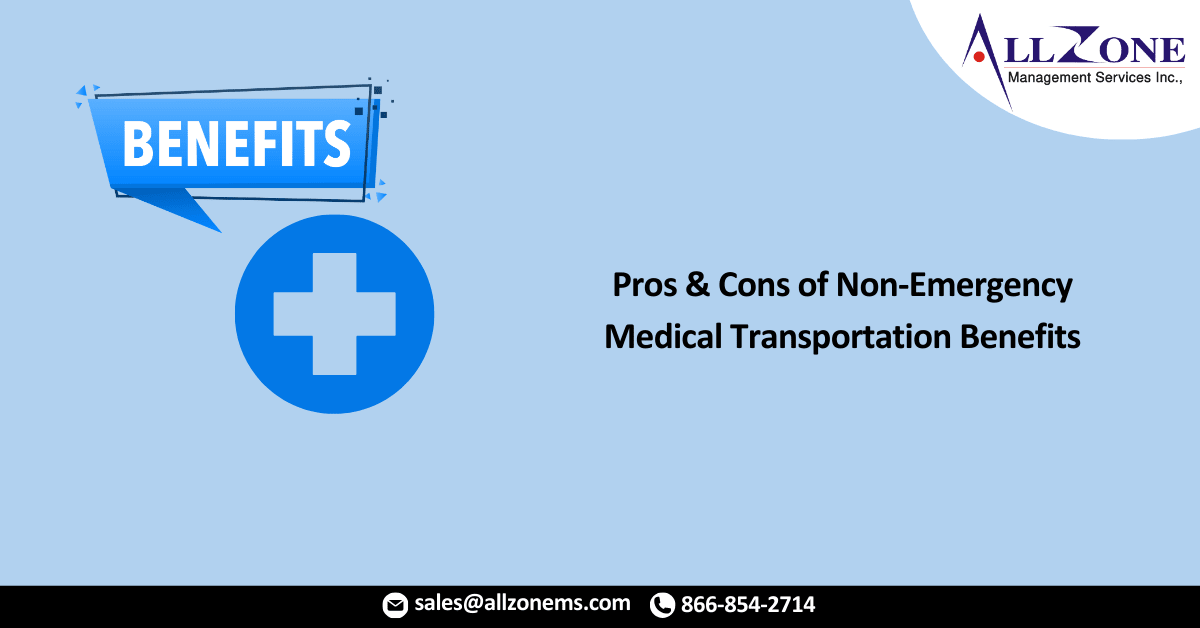MACPAC’s June 2021 report to Congress included findings about non-emergency medical transportation benefits in Medicaid programs that could prove useful for benefits design.
A small fraction of the Medicaid population utilizes non-emergency medical transportation (NEMT) benefits, but for that community of beneficiaries NEMT programs can be indispensable, a MACPAC report recently found.
It has been mandatory for states to offer the non-emergency medical transportation benefit (NEMT) as of December 2020, when Congress added the requirement to the Social Security Act (the Act) through the Consolidated Appropriations Act of 2021. In order to assess the true value of the NEMT benefit, Congress requested a report from MACPAC on the issue.
MACPAC analyzed states’ various NEMT policies and relevant administrative data and conducted beneficiary focus groups in order to determine the benefit’s value.
The MACPAC report found that 2.5 million Medicaid beneficiaries—or 5.2 percent of the Medicaid population—delayed care because of transportation issues.
In 2018, under five percent of the Medicaid population leveraged the NEMT benefit, resulting in more than 60 million NEMT ride days. The benefit cost states and the federal government a total of $2.6 billion, not including managed care payments.
For about 20 percent of all NEMT ride-days, the destination was a physician’s office. Almost 17 percent of the ride-days involved a trip to a diagnostic or therapeutic site. Other less-frequented sites of care included residential facilities, dialysis facilities, and hospitals.
Individuals who used the NEMT benefit averaged 19 ride days in 2018. Those who were disabled and dually eligible individuals had higher use on average and urban dwellers used the benefit more often than rural residents, on average.
One of the biggest challenges that beneficiaries encountered when using their NEMT benefits was the inadequacy of provider networks, which resulted in late pickups, overscheduling, and lack of transportation availability.
Public transportation networks and mileage reimbursement for volunteer drivers could help solve the network issue.
Participants’ performance-related recommendations included adding more time to the ride schedule, providing ways for beneficiaries to track their ride, training drivers, and removing drivers who perpetually delivered low-quality service.
Some of these suggestions could involve improving programs’ use of technologies such as GPS trackers and data, tablets, and mobile or web-based apps.
Additionally, when setting a contract with a broker or Medicaid managed care organization, states should have more oversight capabilities to enforce their agreed upon quality measures. For instance, states may consider offering performance incentives.
Participants also pushed for greater promotion of NEMT programs at a federal, state, and health plan level.
There were three models that states utilized for their NEMT programs: the state-run, broker-run, and managed care carve-in models.
State-run models were more easily streamlined. However, they had less ability to innovate and states had to shoulder a bigger administrative burden.
Brokers can offer more certainty about costs, taking the burden off of states. Consumer participants reported that member engagement and fraud identification were of higher quality in these models. But the financial incentive for workers is to try to limit or reduce the number of NEMT visits that a beneficiary has to take, potentially limiting access to care.
Like the broker-run model, Medicaid managed care organizations take reduce states’ burdens. Since they are incentivized to keep beneficiaries healthy, Medicaid managed care organizations may view NEMT as a preventive care service and may cover more trips to address social determinants of health. But this model can amplify the fragmented nature of NEMT benefits.
Although the number of beneficiaries who leveraged the benefit was not large, these beneficiaries had positive feedback about their need for NEMT. For many, this benefit became essential to ensuring that they had access to care.
The report concluded that low utilization of NEMT among Medicaid beneficiaries could indicate that most beneficiaries did not face transportation challenges. Alternatively, however, it could mean that awareness about this benefit was low among Medicaid beneficiaries.
The report also shed light on common characteristics of Medicaid beneficiaries who would use the NEMT benefit.
The Medicaid populations that are eligible based on disability or age or who had chronic conditions like end-stage renal disease (ESRD) were most likely to use the NEMT benefit. Seven in ten NEMT users had ESRD. Over a third of NEMT users had intellectual or developmental disabilities (34.5 percent) and a quarter had an opioid use disorder.
In the adult population, nearly all of those who delayed care had activity limitations or challenges. They also tended to have conditions such as diabetes and hypertension. Children who delayed care due to transportation challenges were likely to have intellectual disabilities and special needs.
There were also racial disparities in access to care. Non-Hispanic Black beneficiaries were more likely to report delays in care due to lack of access to transportation than non-Hispanic White beneficiaries. Hispanic beneficiaries were the least likely to have delays in care due to transportation issues.
These findings could prove beneficial for Medicare Advantage plans that are rapidly expanding their medical rideshare options.
Payers have used value-based care models with a focus on social determinants of health to improve Medicare Advantage members’ access to medical transportation.
For more information: pros cons of non emergency medical transportation benefits

